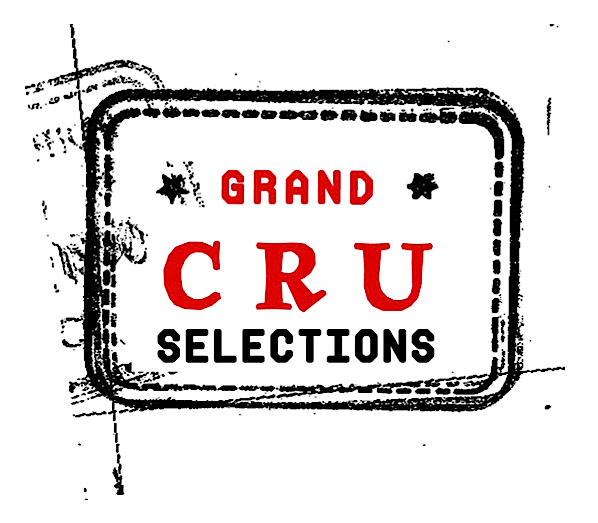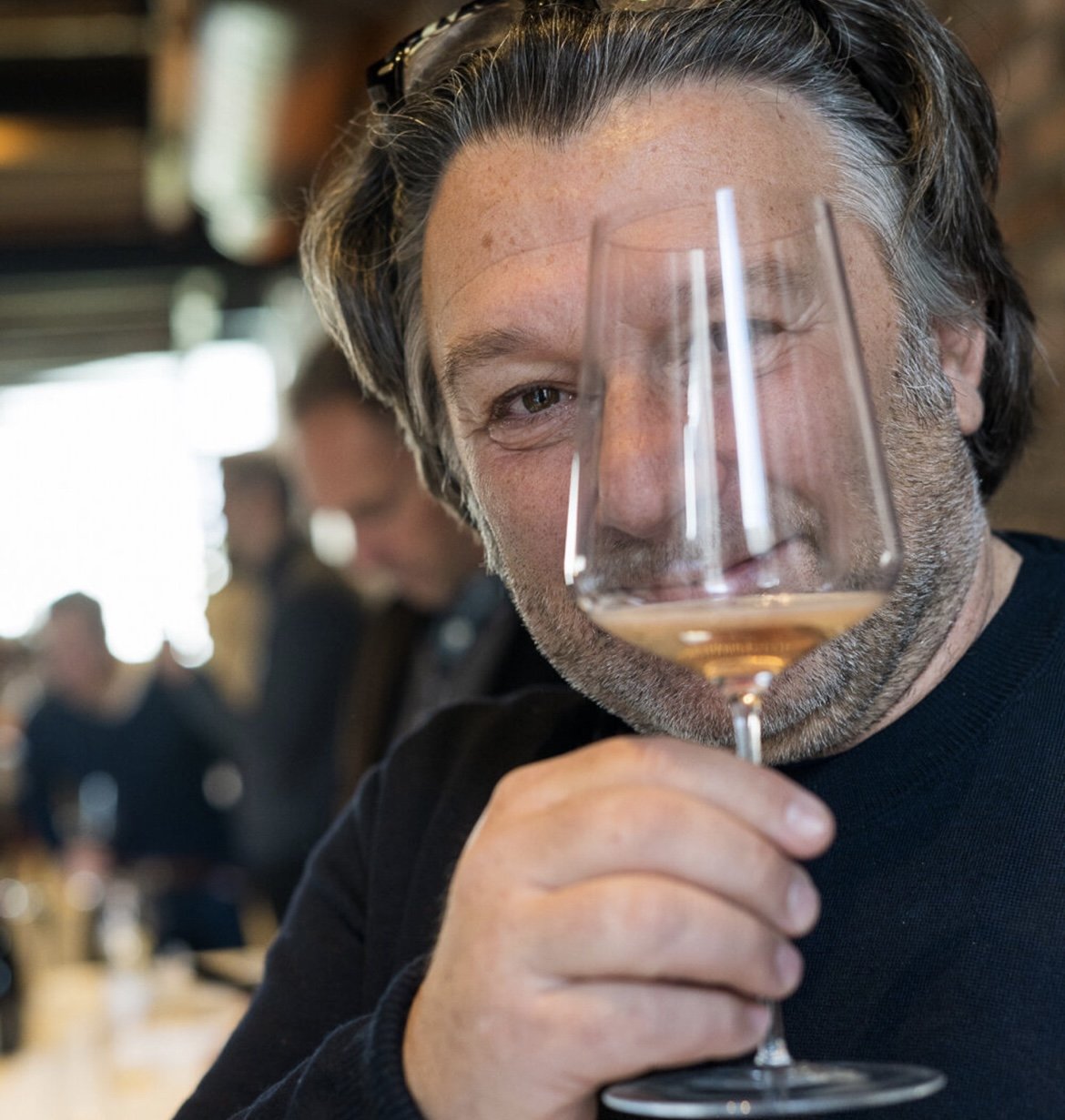Champagne Savart
Ecueil, Montagne de Reim, Champagne, France
Frédéric Savart (photo courtesy of Michel Joly)
Fred Savart is a force to be reckoned with. Tasting in his cellar is as much a tour of the various terroirs of the Montagne de Reims as it is a discussion of what’s new in the wine world. Fred is first and foremost a farmer but right behind that he is a bonafide wine geek. His cellar's entrance is lined with dead soldiers from all the great names and his idea of having you over for dinner is blind tasting you on things that he's really excited about at that moment.
Constantly evolving, Fred is making almost a dozen wines from just 4 hectares. In his own words, his winery is "a laboratory of terroirs and a creator of cuvées."
“There is a reason that Savart’s wines have become the darlings of sommeliers and wine geeks everywhere, and it’s not just their 2,500-cases-per-year scarcity. They have a combination of vibrancy and flavor that are incredibly compelling. But more than that they display a fierce individuality that makes no apologies for itself, and it is this quality that sings in every glass.”
— Alder Yarrow, Vinography.com
-
Frédéric Savart was born into a family of vignerons, but his real dream was to be a professional footballer. He even signed a youth contract with Stade de Reims, but after meeting the woman who was to become his wife, he refused a potential transfer to another club, and decided to return home to work with his father, Daniel. The family estate was founded by Daniel's father, René Savart, who purchased his first vines in 1947. Daniel himself took over the winemaking in the 1970s, although production remained extremely small until the mid-1980s, when he significantly expanded the family's vineyard holdings. Fred returned in 1993 at age 23 and in 2001 he left the cooperative, only doing pressing there. Since 2005, Frédéric has been at the helm of the estate.
-
The soils in this area can vary: many parcels in Ecueil are notably sandy, although there's more clay on the mid-slope, and a few areas that are relatively chalky. The soils of Villiers-aux-Noeuds are generally chalkier than those of Ecueil, and Savart's vineyards here are particularly prized for their sélection massale of the renowned pinot fin d'Ecueil, planted here by Daniel and René.
-
Fred Savart works with two varieties, Chardonnay and Pinot Noir, across two neighboring villages - Ecueil (3 ha) and Villers-aux-Noeuds (1 ha). His philosophy in the vineyards is to prevent disease as much as possible, rather than treat it—towards this end, he prefers a holistic approach, creating an environment within which the plant is better equipped to resist malady on its own.
-
Most of Savart's wines are fermented in stainless steel, although he is increasing the use of barriques, which he has been working with since 2004. Malolactic may be carried out or not, depending on the individual wine and the particularities of the vintage. That said, wines that have reserve wine in the final blend will go through malo because the wine has gone through more heating and cooling cycles. The dosage, which is generally low, is always MCR. "It's more neutral," says Savart, "and also, it's better than using a liqueur that's poorly made or poorly stored."
Wines
L'Ouverture NV
L'Ouverture is Fred Savart's entry level Champagne but it is far from one-dimensional. It is 100% Pinot Noir all from the village of Ecueil, half of which was fermented in mostly neutral barrel with the other half is fermented in stainless steel. The wine only sees partial malolactic fermentation. Fred doesn't guide the malolactic fermentation, instead it is the inclusion of reserve wine that goes through malolactic fermentation because it has gone more temperature swings.
The wine is in equal parts a blend of three successive vintages and aged under cork, not crown cap. Dosage is 7g/L.
L'Accomplie NV
"L'Accomplie" is 80% Pinot Noir and 20% Chardonnay from both Ecueil and Villers-aux-Noeuds. The base vintage makes up 70% of the total blend with the other 30% coming from reserve wine of the two previous vintages. The wine is aged in a combination of neutral oak and stainless steel. The dosage is 5g/L.
L'Année
Savart's "L'Annee" is 60% Pinot Noir and 40% Chardonnay and composed entirely of the vintage's first press. It is aged entirely in 500-liter barrels on lees without undergoing malolactic fermentation. Bottling occurs with no fining or filtering and the dosage is 3g/L.
Bulle de Rose NV
Fred's rosé is a rosé d'assemblage composed of 70% Pinot Noir, 22% Chardonnay, and 8% still red wine. It comes entirely from the village of Ecueil. It is fermented mostly in stainless steel, with around 20% of the blend made in neutral barrels. The dosage is 6g/L.
Le Mont Benoît
Le Mont Benoit (made a household name by Emmanuel Brochet) is a single parcel in Villers-aux-Noeuds. Fred’s plot is 95% Pinot Noir, and 5% Chardonnay. The dosage is 3g/L.
Le Mont des Chrétiens
Le Mont des Chrétiens is a lieu dit in the village Ecueil. The parcel is entirely of Chardonnay and Fred ferments and ages it in 500L barrels. The dosage is 3g/L.
Expression
Savart's "Expression" is Fred's most limited wine with only 400 bottles produced. It is made from 100% old-vine Pinot Noir from the lieux-dits of Aillys, Chaillots derriere, Moutier, and Gillys where the soils are argilo-calcaire. These vineyards are not far from Le Mont des Chretiens. It is fermented in 500L barrels and ages for 10 months sur lie. It is always a single vintage and zero dosage.
Expression Rosé
From the same parcels Fred sources fruit from for his L’Expression, he also makes a rose. Vinification and aging is the same, the wine fermented in 500L barrels and ages for 10 months sur lie. Like Bulle de Rose, Expression Rose is a rosé d'assemblage. It is always made from a single vintage and zero dosage.
Haute Couture
A new cuvée in 2016 that blends 100% Chardonnay from two Cote de Blancs villages: Le Mesnil and Oger. Limited production. 350L barrels, no malo. 10 months in barrel. Dosage 2.5 g/L.

